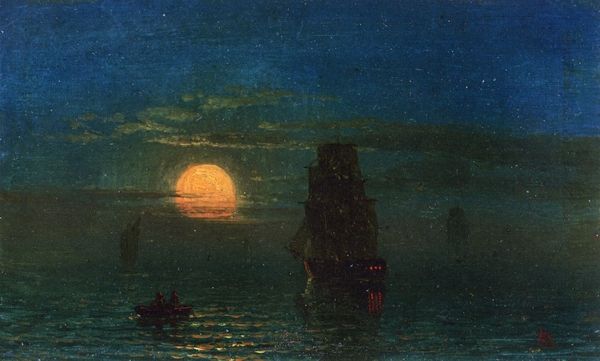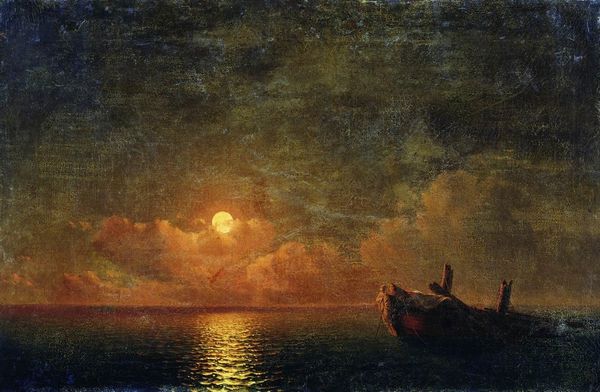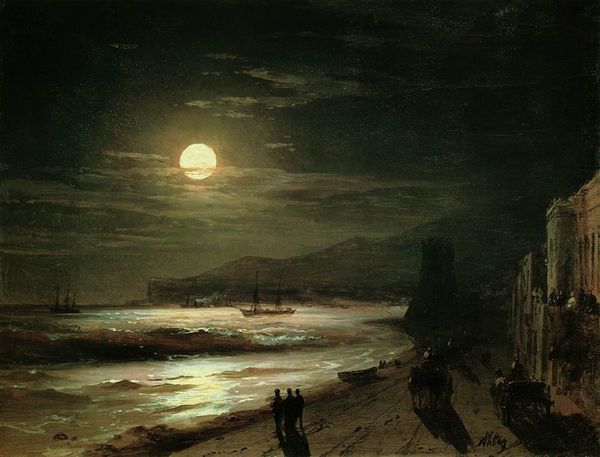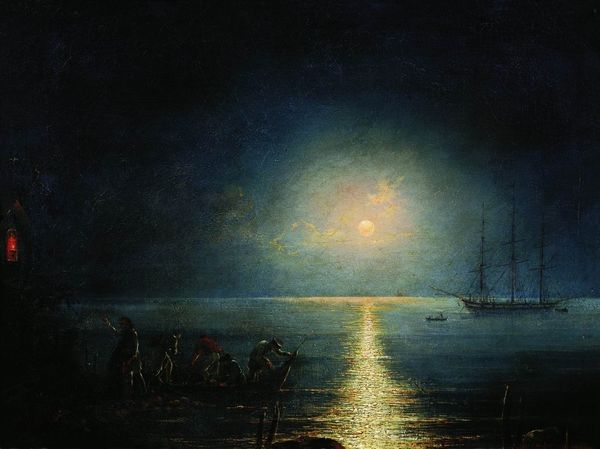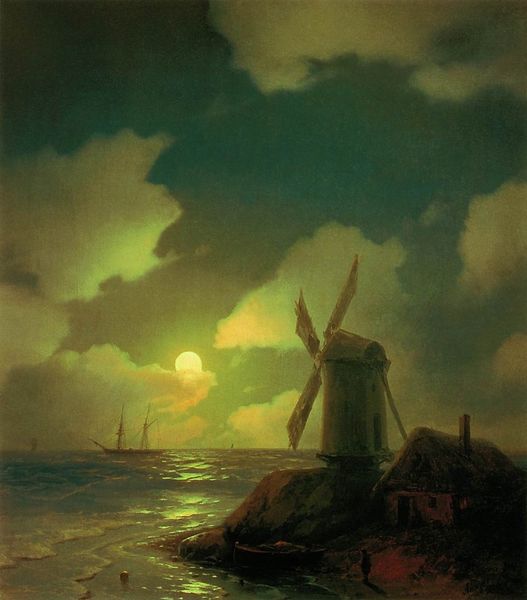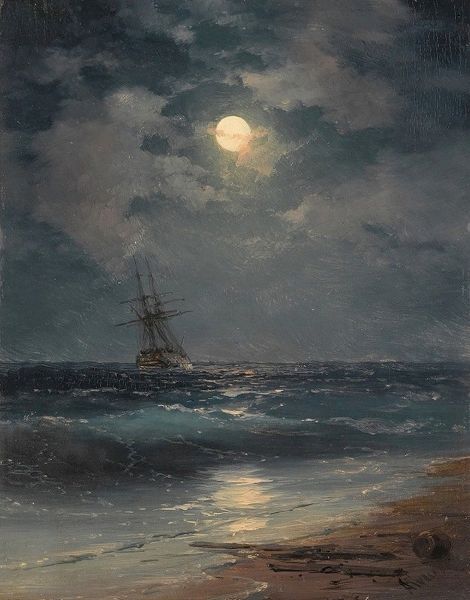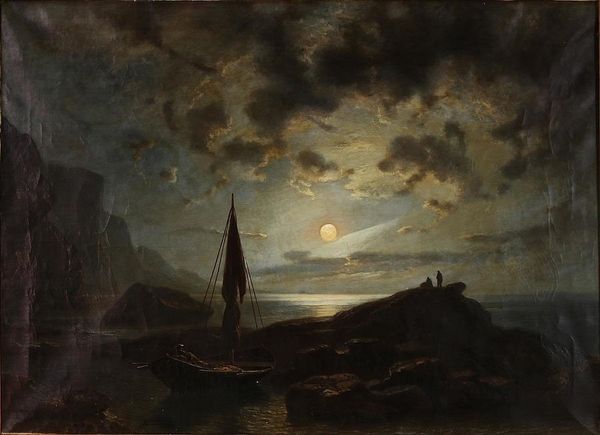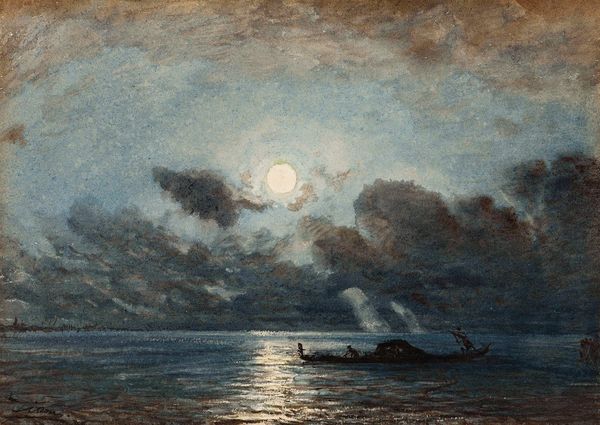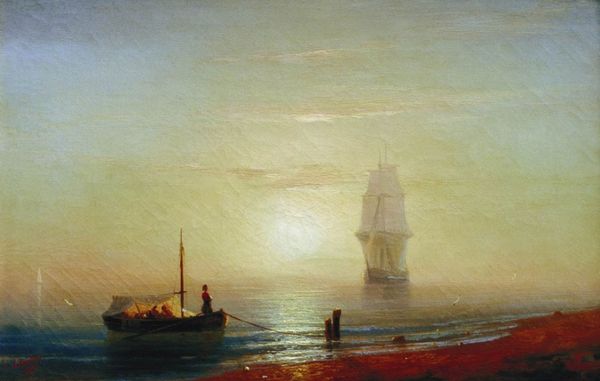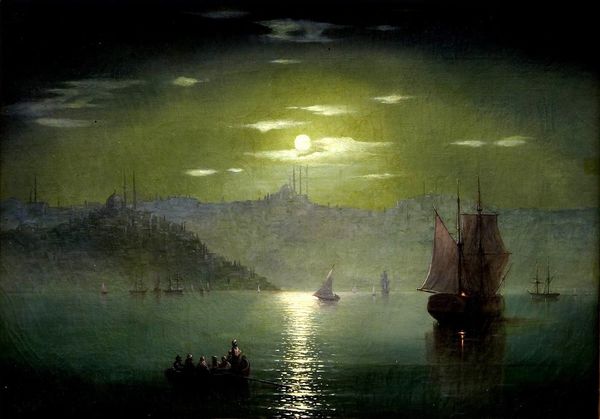
painting, oil-paint
#
water colours
#
painting
#
oil-paint
#
landscape
#
romanticism
#
genre-painting
Copyright: Public domain
Editor: We’re looking at "Full Moon," an oil painting by Ivan Konstantinovich Aivazovsky. The scene is dominated by the moon's reflection on the water, leading the eye towards a distant ship. There’s a small group of figures on the shore, seemingly watching it all. The whole thing feels incredibly still and romantic. What jumps out at you when you look at this? Curator: The arrangement of the pictorial elements offers a dynamic interplay. Note how the sphere of the moon finds a mirroring echo in the geometry of the ship, thus unifying these two focal points. The brushstrokes are loose but precise, which builds luminosity, creating gradients in the sea, the sky, and even on the hull. The textures of the paint suggest rather than define. Are you also attuned to how this lends the artwork to semiotic openness, so there is a clear statement, but plenty of interpretation to be made by the viewer? Editor: Definitely! The light is incredible, the texture of the surface reflecting the light of the moon… it’s mesmerizing. I'm curious, do you think that emphasis on light and shadow and on composition might serve as its message in and of itself? Curator: It may well serve that. Aivazovsky seems less concerned with narrative than with constructing an exercise in pictorial composition and the evocative power of light. The figures in the foreground are diminutive, almost an afterthought. Do they contextualize a deeper tale, or are they there simply to help scale the monumental ocean before us? Look, rather, to how he uses these to play on light as volume. He builds an ephemeral landscape whose power lies not in imitation, but invention. Editor: I never would have considered this without our discussion. Thank you, it definitely provided a fresh appreciation for his focus! Curator: The pleasure has been all mine. This painting becomes a site for exploring what we find pleasing or important, in his use of geometry and material.
Comments
No comments
Be the first to comment and join the conversation on the ultimate creative platform.

